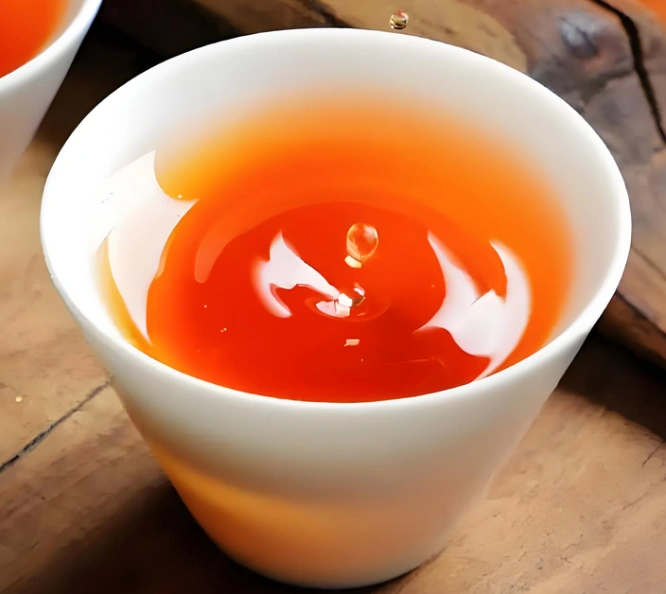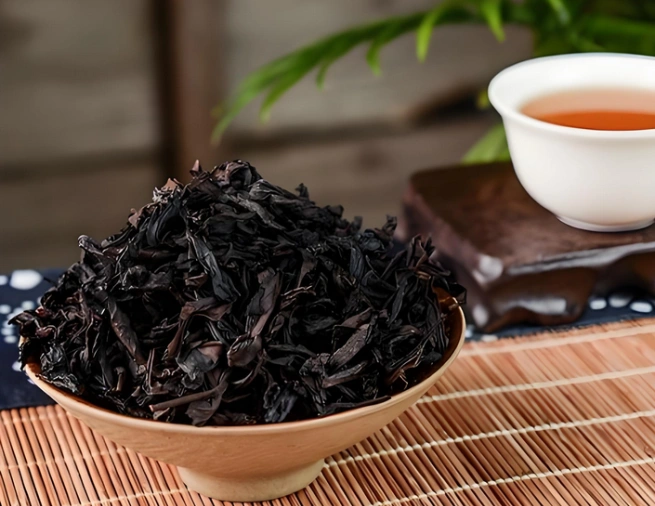Oolong tea for digestion is your gentle ally against bloating, gas, and post-meal heaviness. Picture cradling a warm cup of pale amber tea—its fragrant steam swirling with floral orchid notes and a whisper of toasted chestnut. With the first silky sip, tension in your belly eases, muscles relax, and uncomfortable fullness gives way to a calm, settled warmth.
In this guide, we’ll explore why oolong tea for digestion works so effectively: from its unique processing and bioactive compounds, to brewing techniques, ideal varieties, and the perfect timing to sip for maximum digestive comfort.
Understanding Digestive Health and Why It Matters
Your digestive system not only breaks down food but also influences energy, mood, immune function, and metabolic health. When digestion falters—whether from stress, rich foods, or sluggish gut motility—you may experience cramps, bloating, or brain fog. By incorporating oolong tea for digestion into your routine, you harness natural compounds that soothe the gut lining, stimulate healthy enzyme activity, and support balanced nutrient absorption—empowering you to feel lighter, clearer, and revitalized.
What Makes Oolong Tea Special?
Oolong tea bridges green and black tea worlds through partial oxidation (10%–70%). This nuanced process unlocks:
- Complex polyphenols (theaflavins, thearubigins) that modulate digestive enzymes.
- Mild caffeine to gently stimulate gut motility without overstimulation.
- L-theanine for relaxation of smooth muscle and stress-induced digestive tension.
- Aromatic oils that calm inflammation and encourage healthy bile flow.
The result is a tea that delights the senses and harmonizes digestion.

How Oolong Tea Supports Digestion
Muscle Relaxation & Gas Reduction
Oolong’s L-theanine and gentle heat relax intestinal smooth muscles, reducing spasms and gas. A mid-morning or post-lunch cup can prevent that tight, bloated feeling from settling in.
Enzyme Stimulation & Nutrient Absorption
Polyphenols in oolong activate pancreatic lipase and amylase, enhancing fat and carbohydrate breakdown. This efficient digestion ensures you extract maximum nutrients and avoid undigested residues that ferment and cause discomfort.
Oolong Tea and Metabolism: A Secondary Benefit
While your sip soothes digestion, thermogenic polyphenols simultaneously boost oolong tea and metabolism—increasing calorie burn by up to 5%. This dual action makes oolong a powerful addition to any wellness regimen.
Oolong Tea for Gut Health: Nurturing Your Microbiome
A balanced microbiome underpins smooth digestion. Oolong’s prebiotic fibers and antioxidants foster beneficial bacteria growth, improving gut barrier integrity and reducing inflammation—core principles of oolong tea for gut health.
Oolong Tea in Weight Loss Plans: Digestive Synergy
Integrating oolong tea weight loss strategies with digestive support yields potent results:
- Pre-meal Cup: Moderates appetite and primes digestive enzymes.
- Post-meal Cup: Clears residual fats and reduces bloating.
- Between-meal Sips: Stabilizes blood sugar and curbs cravings.
Combined with balanced nutrition and activity, oolong accelerates fat oxidation and digestive ease.
Key Compounds in Oolong Tea That Aid Digestion
- Theaflavins/Thearubigins: Anti-inflammatory, enzyme modulators.
- Catechins: Protect gut lining and reduce gas formation.
- Caffeine: Stimulates peristalsis gently.
- L-theanine: Relaxes digestive musculature, eases stress-induced discomfort.
These elements create a holistic digestive tonic in every cup.
How to Brew Oolong Tea for Optimal Digestive Support
- Water Temperature: 95–100 °C to preserve delicate polyphenols.
- Leaf-to-Water Ratio: 5 g per 150 ml water for balanced strength.
- Rinse: 5 s quick rinse to awaken leaves.
- Steeping:
- First Infusion: 1 min for a light, soothing brew.
- Subsequent: +15 s per steep, up to 4–5 steeps.
- Mindful Sipping: Pause between sips, inhale aroma, feel warmth cradle your belly.
For evening, try a lower-caffeine, shorter steep to avoid sleep disruption.

🔗 To learn more about how to make tea, check out Tanbiwencha’s YouTube video explaining how to make tea.
Best Oolong Varieties for Digestion
- Tieguanyin: Floral, light roast, ultra-smooth—ideal after rich meals.
- Wuyi Rock Oolong Tea: Mineral backbone and gentle roast support bile flow.
- Phoenix Dan Cong Oolong Tea: Complex fruit notes and digestive soothing.
- High Mountain Taiwanese Oolong: Crisp, clean, high polyphenol content.
Rotate varieties to explore flavors and digestive nuances.

Timing & Rituals: When to Sip for Maximum Benefit
- Morning Start: A light cup on an empty stomach to kickstart enzymes.
- Pre-Meal Ritual: 10 min before eating to prime digestion.
- Post-Meal Comfort: 15–30 min after a heavy meal to ease processing.
- Evening Wind-Down: A lighter infusion to aid overnight gut repair.
Create a mindful tea ritual that aligns with your body’s natural rhythms.
Common Mistakes and How to Avoid Them
- Boiling Water: Scalds leaves, destroys beneficial compounds.
- Oversteeping: Increases bitterness and can irritate the stomach.
- Low-Quality Leaves: Dust-grade teas lack digestive-supporting polyphenols.
- Excess Intake: More than 4 cups/day may cause mild caffeine jitters.
Stick to whole-leaf, reputable sources and precise brewing.
Conclusion & First-Sip Recommendations
Embrace oolong tea for digestion as your daily digestive harmony ritual. Begin with Tieguanyin at breakfast for enzyme activation, follow with a Wuyi rock infusion post-lunch to clear residual fats, and wind down with a delicate high-mountain steep before bed. Over time, you’ll feel lighter, more energized, and in tune with your body’s digestive rhythms. Raise your cup to natural digestive bliss—cheers to every soothing sip!



